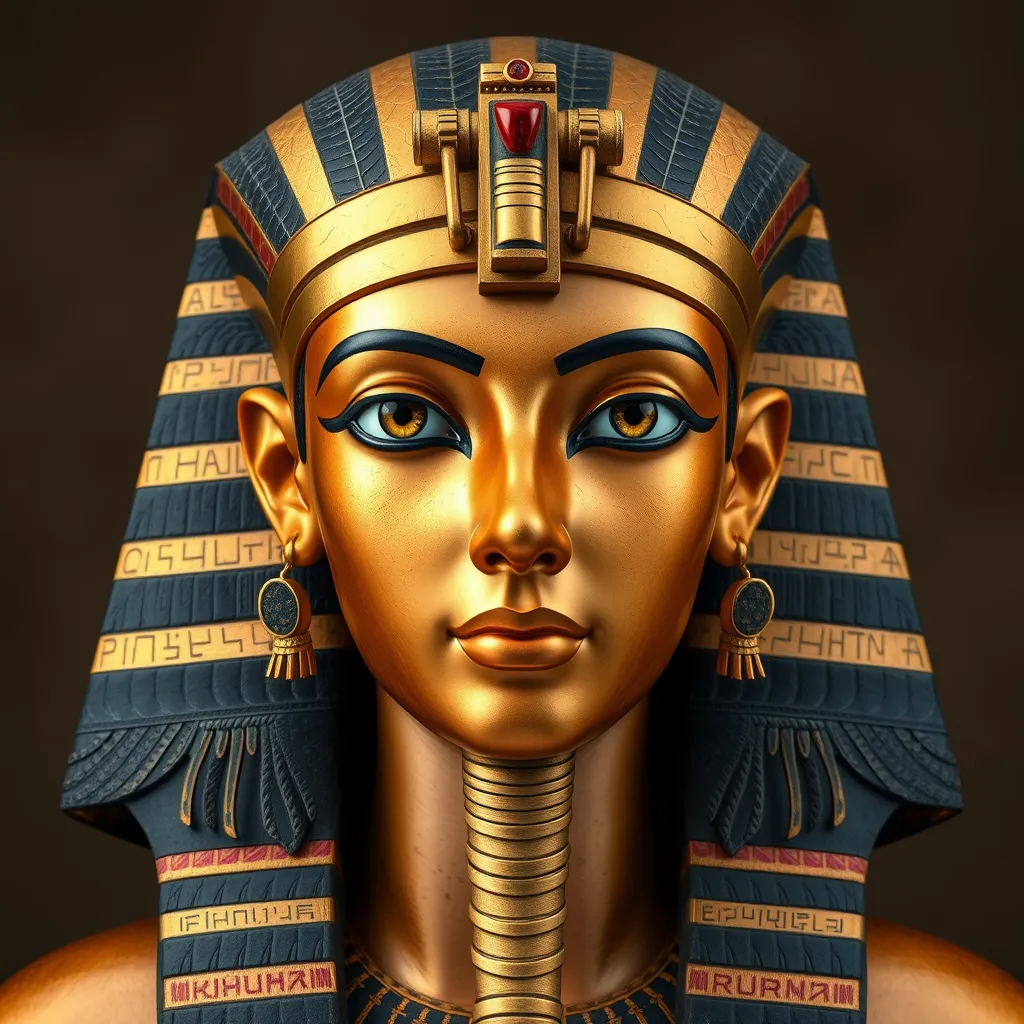The Art of the Pharaohs: Royal Portraits and Their Symbolic Meaning
I. Introduction
Ancient Egyptian art is a profound reflection of the civilization’s beliefs, values, and societal structure. Among the various artistic expressions, royal portraits hold a unique significance as they encapsulate the essence of pharaonic culture. These portraits were not merely depictions of the rulers; they were imbued with deep symbolic meaning, serving as powerful representations of the Pharaohs’ divine right to rule and their connection to the gods.
This article aims to explore the rich tapestry of symbolism behind royal portraits in ancient Egypt, emphasizing their historical context, characteristics, and enduring legacy.
II. Historical Context of Royal Portraits
The evolution of royal portraiture in ancient Egypt can be traced through distinct periods, each marked by unique artistic styles and cultural influences. From the Early Dynastic Period to the Ptolemaic Era, the representations of Pharaohs transformed, reflecting the political and religious changes of the time.
- Early Dynastic Period: Characterized by simple yet powerful imagery, focusing on the Pharaoh’s role in unifying Upper and Lower Egypt.
- Middle Kingdom: A period of artistic refinement where facial realism began to emerge, depicting Pharaohs with more human-like features.
- New Kingdom: The height of artistic expression, featuring elaborate depictions with rich colors and intricate details, often showcasing the Pharaoh in divine contexts.
Religion and politics played a crucial role in shaping artistic expression during these periods. Pharaohs were often portrayed as intermediaries between the gods and the people, reinforcing their divine status and authority.
III. Characteristics of Pharaohs’ Portraits
Pharaohs’ portraits are distinguished by common themes and motifs that convey their power and divinity. These characteristics can be summarized as follows:
- Common Themes: Portraits often depict the Pharaoh in a heroic or divine posture, emphasizing their strength and leadership.
- Iconography: Numerous symbols are employed in royal imagery, such as the crook and flail representing kingship, and the ankh symbolizing life.
- Materials and Techniques: Artists utilized materials like stone, metal, and wood, employing techniques that ranged from carving to painting, resulting in both three-dimensional and two-dimensional representations.
IV. Symbolism in Pharaohs’ Portraits
The symbolism in Pharaohs’ portraits is multifaceted, reflecting their status as god-kings:
- Representation as a God-King: Pharaohs were often depicted with divine attributes, such as a headdress adorned with sacred symbols, indicating their role as both ruler and deity.
- Use of Colors, Poses, and Attire: Colors carried specific meanings; for example, gold represented eternity and divine power, while certain poses conveyed authority and strength.
- Significance of Facial Features: The portrayal of facial features and expressions was deliberate, aiming to evoke a sense of majesty and permanence, often idealizing the Pharaoh’s appearance.
V. Notable Pharaohs and Their Portraits
Throughout ancient Egyptian history, several Pharaohs have left a lasting imprint through their portraits:
- Tutankhamun: Known for his iconic funerary mask, Tutankhamun’s portrait reflects youthful beauty and divine protection, adorned with intricate gold and lapis lazuli.
- Ramses II: Often referred to as Ramses the Great, his statues and carvings exhibit a commanding presence, emphasizing his military victories and long reign.
These portraits not only served to immortalize the rulers but also influenced societal views on leadership and divinity, reinforcing the cultural significance of the Pharaohs.
VI. The Role of Portraits in Rituals and Funerary Practices
Royal portraits played a vital role in ancient Egyptian rituals and funerary practices:
- Connection to the Afterlife: Portraits were believed to ensure the Pharaoh’s continued existence in the afterlife, acting as a vessel for their spirit.
- Use in Tombs and Temples: Many portraits were placed in tombs and temples, serving as a focal point for worship and remembrance.
- Legacy and Remembrance: Through art, Pharaohs aimed to leave a legacy that would endure beyond their physical lives, ensuring their names and deeds would be remembered.
VII. Cultural Legacy of Egyptian Royal Portraits
The cultural legacy of Egyptian royal portraits extends far beyond their time:
- Influence on Later Art Movements: The stylistic elements of Egyptian portraiture have influenced various art movements, including Neoclassicism and Art Deco.
- Modern Interpretations: Contemporary artists and historians continue to reinterpret pharaonic art, drawing connections between ancient and modern themes.
- Ongoing Fascination: The allure of Egyptian portraiture persists in popular culture, inspiring films, literature, and exhibitions worldwide.
VIII. Conclusion
Royal portraits in ancient Egypt are a vital key to understanding the civilization’s complex social, political, and religious fabric. These works of art not only represented individual rulers but also encapsulated the broader themes of divinity, power, and legacy. The enduring symbolism and significance of pharaonic art continue to resonate, reminding us of the rich artistic heritage of Egypt. As we appreciate these remarkable pieces, we gain invaluable insights into the lives and beliefs of one of history’s most fascinating civilizations.




